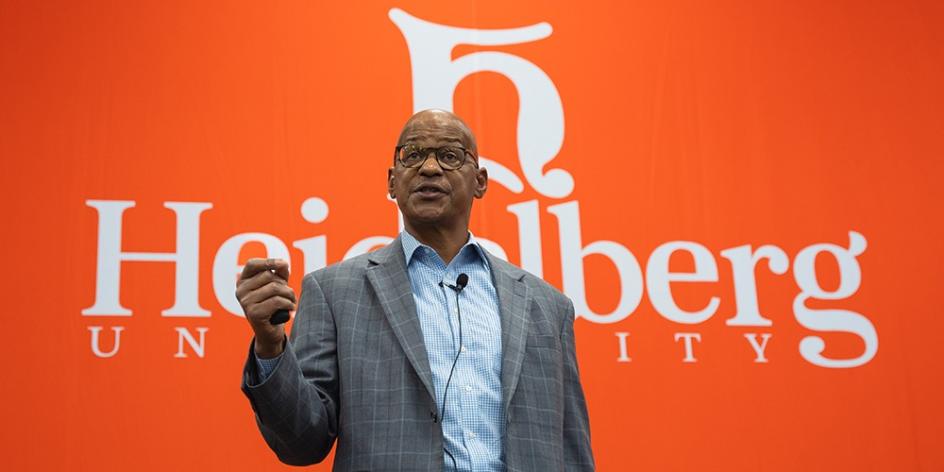
After decades of experience in the energy industry, Lee Jourdan transitioned to a new role to develop a more diverse, equitable and inclusive workplace culture at Chevron. During his visit to Heidelberg as the keynote speaker for the first HYPE Day of the academic year, Jourdan shared his advice on how to implement workplace diversity and create impactful employee programs.
Jourdan’s talk also delved into how to involve teams in constructive, non-polarizing conversations around privilege, diversity and inclusion in the workplace.
It’s imperative, he said, to appreciate the beauty and value of diversity and the differences that strengthen and enrich our world. Successfully navigating DEI issues is a key component to that appreciation.
While Chevron was doing a lot to create a positive DEI culture, company executives “just were not talking about it and not leveraging it,” Jourdan said. It was at that time that he sought out a new role with the company, becoming its Chief Diversity and Inclusion Officer. He called that experience “some of the most impactful work I did in my 43-year career.”
To understand diversity, we need to define and understand its six dimensions: visual, relational, social, occupational, value and cognitive. Organizations need to look internally, too, to discern what drives them to have a diverse culture. “The best organizations will be a combination of altruism and value creation. That’s sustainable,” Jourdan said. Motivation based solely on compliance doesn’t isn’t sustainable.
Students looking for business environments with a strong DEI commitment should target organizations that also optimize equity, which sometimes gets a bad rap.
“It’s about creating situations that remove the headwinds and tailwinds from an organization and provide an opportunity for everyone to compete,” he said. “Identify where some (companies) may have advantages and some may not provide a level playing field.”
It’s key, he told the students, to research and ask questions about a company’s DEI commitment. Ask for metrics on diversity, what DEI programs a potential employer offers and why DEI is important to the company. Ask about DEI awards and recognition programs and look for the use of inclusive language.
When young employees find themselves in a culture where they don’t fit, it can be a challenge to navigate. Sometimes, they need to take matters into their own hands, Jourdan advised.
“Diversity is a fact. Find ways to leverage it,” he said. “Inclusion is an action you have to actively do. Demonstrate inclusive behavior yourself. Show what it looks like and infuse it into what you do.”
“The objective is to create a wider path to opportunity.”
Ultimately, diversity is a business tool that links an organization’s objectives to sustainable actions. Employees just entering the workforce should “seek a culture that aligns with your values but also “grow where you’re planted.”